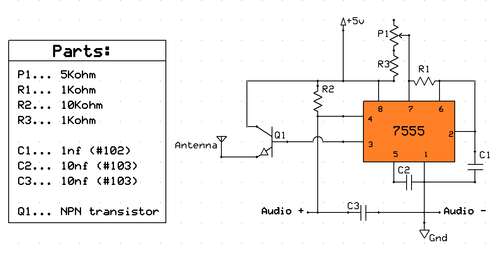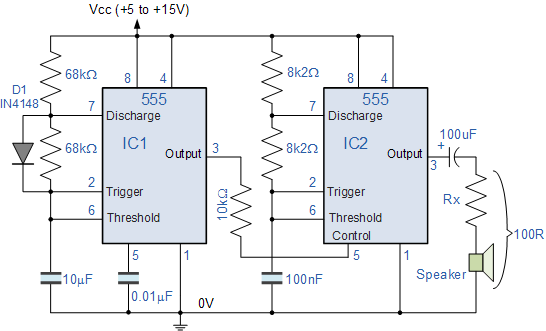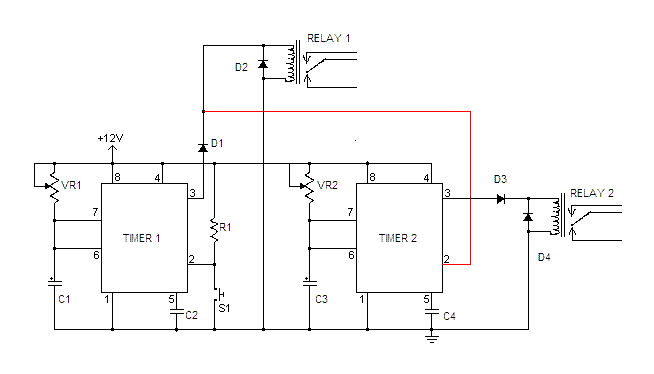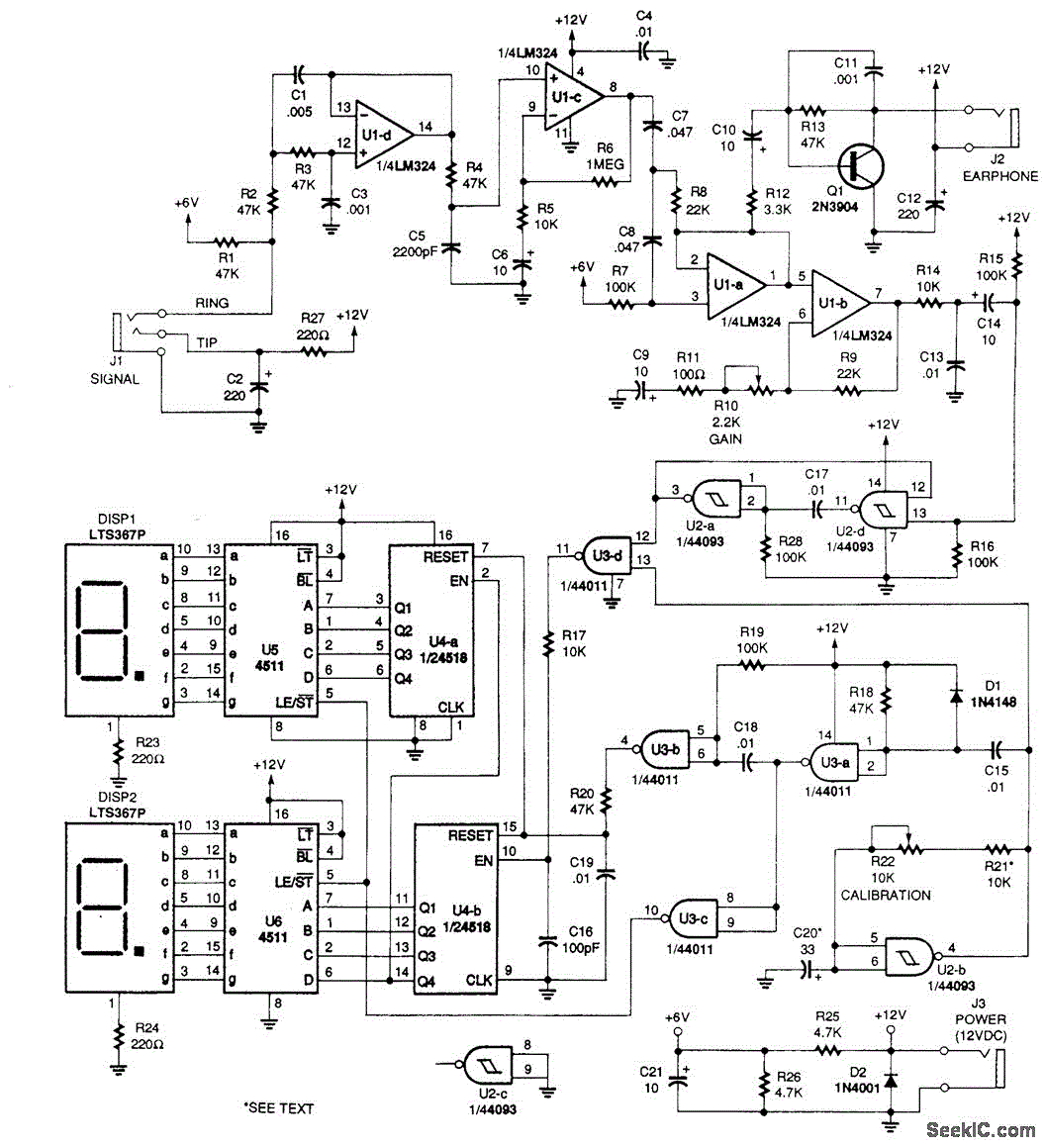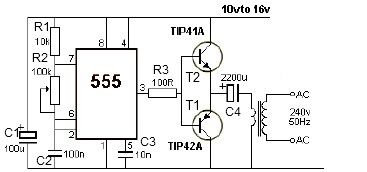
Stun Gun with 555
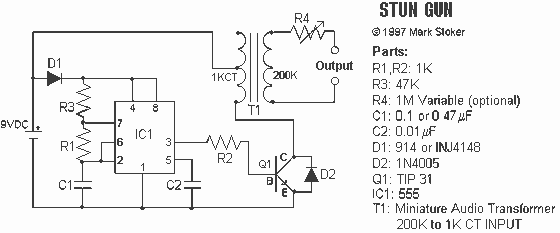
This stun gun is powered by a 9V battery. The transformer steps up the voltage to about 1800V (but with very low current). A 555 timer IC is used to generate a high-frequency output. A 1 MEG variable resistor can also be used at the output to drop the voltage, but this is optional. If you build this circuit, be careful, as it outputs a high voltage. Touching the output leads will induce a painful shock.
The circuit operates on a 9V battery, which serves as the primary power source. The 555 timer integrated circuit (IC) is configured in astable mode to produce a square wave signal at a high frequency, typically in the range of several kilohertz. This high-frequency output is essential for driving the transformer effectively, allowing it to step up the voltage.
The transformer utilized in this circuit is a high-voltage transformer designed to increase the voltage from the 9V input to approximately 1800V. It is crucial to note that while the voltage is significantly high, the output current remains low, which is a characteristic feature of stun gun circuits. This combination of high voltage and low current is what allows the device to deliver a painful shock without causing fatal harm.
In addition to the transformer, a 1 MEGΩ variable resistor can be integrated into the circuit at the output. This component serves as a means to adjust the output voltage, providing the user with the ability to control the intensity of the shock. However, the inclusion of this resistor is optional and may be omitted depending on the design preferences of the builder.
Safety precautions are paramount when constructing or handling this circuit. The high voltage output can induce a painful shock if contact is made with the output leads. Proper insulation and safety measures should be implemented to prevent accidental contact with the high-voltage components. It is recommended that individuals with adequate knowledge of high-voltage electronics should undertake the construction and testing of this stun gun circuit.This stun gun is powered by a 9V battery. The transformer steps up the voltage to about 1800V (but with very low current). A 555 timer IC is used to generate a high-frequency output. A 1 MEG variable resistor can also be used at the output to drop the voltage, but this is optional. If you build this circuit, be careful, as it outputs a high voltage. Touching the output leads will induce a painful shock. 🔗 External reference
The circuit operates on a 9V battery, which serves as the primary power source. The 555 timer integrated circuit (IC) is configured in astable mode to produce a square wave signal at a high frequency, typically in the range of several kilohertz. This high-frequency output is essential for driving the transformer effectively, allowing it to step up the voltage.
The transformer utilized in this circuit is a high-voltage transformer designed to increase the voltage from the 9V input to approximately 1800V. It is crucial to note that while the voltage is significantly high, the output current remains low, which is a characteristic feature of stun gun circuits. This combination of high voltage and low current is what allows the device to deliver a painful shock without causing fatal harm.
In addition to the transformer, a 1 MEGΩ variable resistor can be integrated into the circuit at the output. This component serves as a means to adjust the output voltage, providing the user with the ability to control the intensity of the shock. However, the inclusion of this resistor is optional and may be omitted depending on the design preferences of the builder.
Safety precautions are paramount when constructing or handling this circuit. The high voltage output can induce a painful shock if contact is made with the output leads. Proper insulation and safety measures should be implemented to prevent accidental contact with the high-voltage components. It is recommended that individuals with adequate knowledge of high-voltage electronics should undertake the construction and testing of this stun gun circuit.This stun gun is powered by a 9V battery. The transformer steps up the voltage to about 1800V (but with very low current). A 555 timer IC is used to generate a high-frequency output. A 1 MEG variable resistor can also be used at the output to drop the voltage, but this is optional. If you build this circuit, be careful, as it outputs a high voltage. Touching the output leads will induce a painful shock. 🔗 External reference
